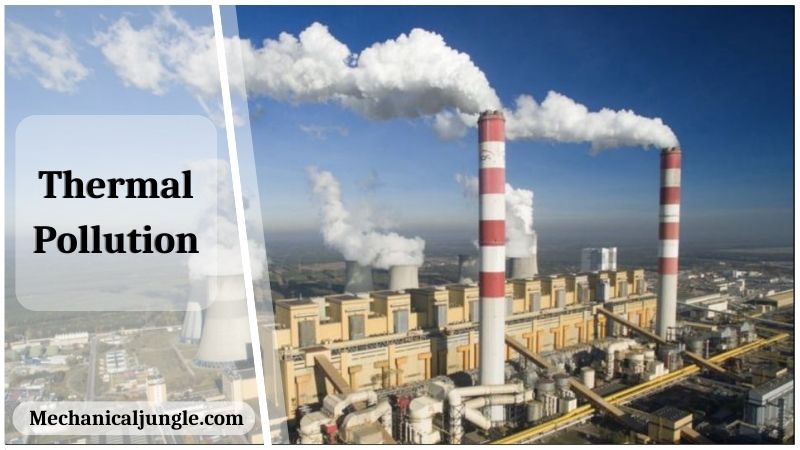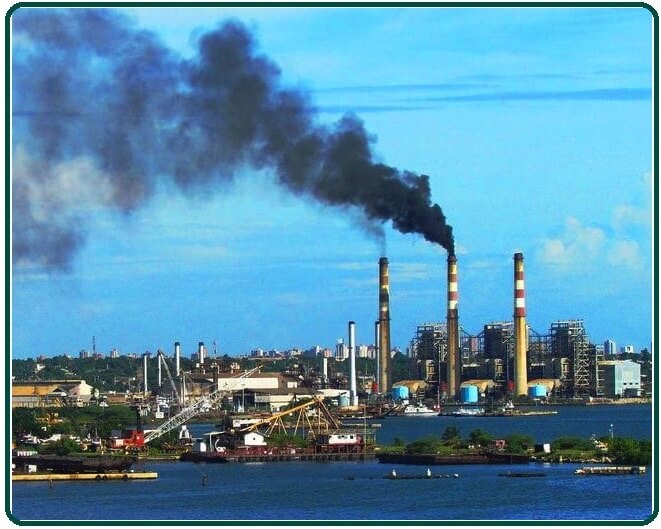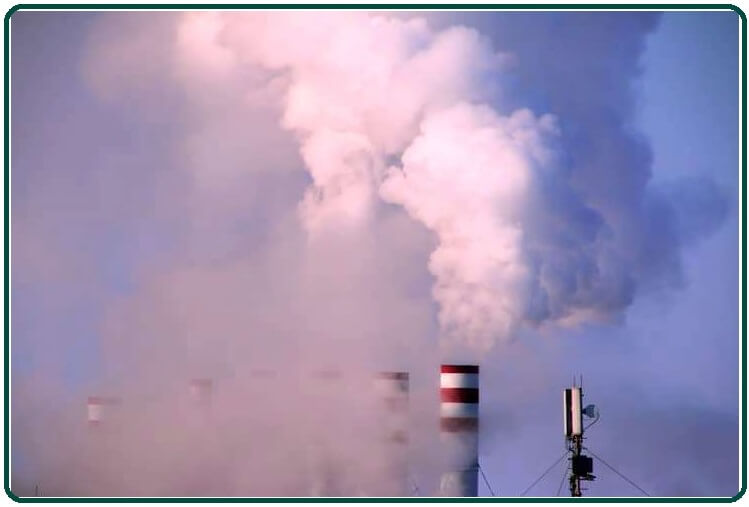Important Point
What Is Thermal Pollution?
Thermal pollutions are an unnatural change in the ambients temperature of a water body that degrades its quality. Various industrials processes use water as a coolant & release hot water into natural resources that affect the ecosystem and surrounding communities.
A sudden rises or falls in the temperatures of natural water bodies, oceans, lakes, rivers, and ponds can cause an imbalance in their molecular behavior. Unlike other environmental issues such as air pollution, toxic emissions, waste generation, etc., thermal pollution is quite different than one might think.
This article will discuss what causes thermal pollution, its impact on the environment, and various control measures. Heavy industries like electricity, paper, nuclear, etc., use water as a coolant for various processes due to its high heat capacity. These industries take water from nearby natural water bodies and release it back into the natural system after use.
So what’s the problem here? The water acting as a coolant exchanges heat with the process fluid and is in turn heated, then dumped back into the water bodies. When converted water mixes with natural water bodies, the effective temperature rises, leading to a decrease in dissolved oxygen levels. When one thinks of pollution, often the thought of thermal pollution does not come to mind.
People will first think of things like carbons emissions, personal pollution & waste, & many other changing factors. However, thermal pollutions is a real & persistent problem in our modern society. In layman’s terms, thermal pollution occurs when an industry or other man-made organization takes water from a natural source and either cools or heats it.
They then release that water back into a natural resource, which alters oxygen levels and can have devastating effects on local ecosystems and communities. Thermal pollution is defined as sudden increases or decreases in temperatures of a natural body of water, which can be a sea, lake, river, or pond, from human influence.
This usually occurs when a plant or facility takes water from a natural resource and puts it back with a changing temperature. Typically, these facilities use it as a cooling method for their machinery or to help them produce their products better. Plants producing various products or wastewater facilities are often the culprits of this mass exodus of thermal pollution.
To properly control and maintain heat pollution, humans and governments are taking a number of steps to effectively manage how plants can use water. However, its effect persists even today.
Also, Read: What Is Piston Ring? | How Is Piston Ring Installation Done? | Types and Functions of Piston Rings
Causes of Thermal Pollution:
#1. Water as a Cooling Agents in Power, Manufacturing, & Industrials Plants
Production & manufacturing plants are the biggest sources of thermal pollution. These plants draw water from nearby sources to keep the machines cools & then release it back into the higher temperature source.
When warm water returns to a river or ocean, the water temperature rises rapidly. When the oxygen level in water changes, it can also impair the quality and longevity of life of underwater wildlife. The process can also wipe out vegetation along river banks, which depend on a constant level of oxygen and temperature.
By changing these natural environments, industries are essentially helping to reduce the quality of life for these marine-based life forms, which can eventually destroy habitats if they are not controlled, and their practices are careful.
#2. Natural Causes
Natural causes such as volcanoes, geothermal vents, & hot springs beneath oceans and seas can trigger hot lava to raise the temperatures of waters bodies. Flashes of Lightning can also bring huge amounts of heat to the oceans. This means that the overalls temperatures of the water sources will increase, which will have a significant impact on the environment.
#3. Retention Pond
Retention ponds can be another’s source of thermal shocks because water bodies that are relatively small and shallow can absorb considerable heats energy from the sun. When that water is pumped directly into rivers, lakes, or creeks, it causes a significant increase in temperature.
It is similar to pouring hot pitchers of water into a bathtub fulls of water that causes the water to jumps a few degrees Fahrenheit.
#4. Soil Erosion
Soil erosions are another majors factors that cause thermal pollution. Continuous soil erosion causes water bodies to rise, exposing them to sunlight. High temperatures can prove fatal to the aquatic biome as they can lead to anaerobic conditions.
#5. Deforestation
Trees and plants block sunlight from falling directly on lakes, ponds, or rivers. When deforestation occurs, these water bodies are exposed to direct sunlight, thus absorbing more heat and raising their temperature. Deforestation is also the main reason for the high concentration of greenhouse gases, that is, global warming in the atmosphere.
#6. Runoff From Paved Surfaces
Urban runoff released into surface water from paved surfaces such as roads and parking lots can make the water hotter. During the summer season, the pavement becomes quite hot, which creates hot runoff that mixes into sewer systems and water bodies.
#7. Domestic Sewage
Domestic sewages are often discharged into rivers, lakes, canals, or streams without being treated as waste. The sewage temperature of municipal water is normally higher than that of receiving water. With an increase in the temperature of the obtained water, the dissolved oxygen (DO) decreases, and the demand for oxygen increases, leading to anaerobic conditions.
Also, Read: What Is Biomass? | Different Method of Biomass Conversion | Method of Biomass Conversion
Effects of Thermal Pollution:
There are generally two ideologies among recognized scientists and scholars when it comes to the effects of thermal pollution. Some lean on the negative side of this pollution on marine ecosystems and how it is detrimental to positive environmental practices.
However, some lean on the side that without these industries and the way they operate, some of the most basic parts of human life would be completely obsolete. Wastewater will not be properly maintained; We would have no industry that could produce the goods we need, and so on.
The effects of thermals pollutions on ecosystems, however, far outweigh the benefits to industries by participating in the Act.
#1. Decrease in DO (Dissolved Oxygen) Levels
Warmer temperatures reduce the level of DO (dissolved oxygen) in the water. Hot water contains relatively less oxygen than cold water. Deficiency in DO can cause suffocation to plants and animals such as fish, amphibians, and copepods, which can lead to anaerobic conditions.
Warm water allows algae to thrive on the surface of the water, and over the long term, algae overgrowth can reduce the oxygen level in the water.
#2. Increase in Toxins
With the constant flow of high-temperature discharges from industries, there has been a huge increase in toxins that are reproducing in the natural body of water.
These toxins may contain chemicals or radiations that can have a drastic effect on the local ecology & makes them susceptible to various diseases.
#3. Affects Reproductive System
A significant interruption in the reproduction of marine wildlife (although this may be true, breeding can still occur among fish – but the chances of defects in newborns are significantly higher) may be caused by rising temperatures as breeding temperatures change to a certain level.
It may be within limits. Extreme temperatures can cause the release of immature eggs or prevent the normal development of some eggs.
#4. Increases Metabolic Rate
Thermal pollutions increase the metabolic rates of organisms because of increased enzyme activity which causes organisms to consume more food than they would normally need without changing their environment. This disrupts the stability of the food chain and alters the balance of species composition.
#5. Migration
Warm water can cause a particular species of organism to migrate to a suitable environment that will meet its needs for survival. This can harm the species that depend on them for their daily food as their food chain is disrupted.
#6. Loss of Biodiversity
A dent in biological activity in water can lead to a significant loss of biodiversity. Changes in the environment may cause some species of organisms to shift their base to another location, while there may be a large number of species that may relocate due to warmer waters.
Organisms that can adapt easily may have advantages over organisms that are not used to warm temperatures.
#7. Ecological Impact
Sudden thermal shock can result in the mass killing of fish, insects, plants, or amphibians. Warm water can prove favorable for some species, while it can be fatal for other species.
Smaller water temperatures increase activity levels, while higher temperatures decrease activity levels. Many aquatic species are sensitive to small temperature changes, such as one degree Celsius that can cause significant changes in organismal metabolism and other adverse cellular biology effects.
Solutions to Thermal Pollution:
Thermal pollution needs to be addressed in the future for its harmful effects on the aquatic ecosystem. Several methods have been suggested and developed to convert thermal effluents from power plants into useful thermal resources in order to maximize profits. The solutions for thermal discharge in water bodies are as follows:
#1. Cooling Pond
Cooling ponds or reservoirs is the simplest way to control thermal discharge. In cold ponds, warm effluents at the surface of the water maximize heat dissipation to the atmosphere and reduce the area and volume of water. This is the simplest & cheapest method that cools the water to a fairly low temperature. However, the method alone is less desirable as well as inefficient in terms of air-water contact.
#2. Artificial Lake
Artificial lakes are man-made water bodies that provide potential alternatives. Heated effluent may be discharged into the lakes at one end, & water may be drawn from the other end for cooling purposes. The heat is eventually dissipated through evaporation. However, these lakes will have to be constantly rejuvenated.
#3. Water Recycling
Industrially treated water can be recycled for domestic use or industrial heating, reducing the problem of thermal pollution.
#4. Cooling Towers
After the water from water sources is used for cooling, it is later returned to the water body after passing through the condenser, a process called cooling.
Therefore the cooling towers are designed to control the temperature of the water to make the cooling process more effective. Cooling towers are mainly used to dissipate waste heat to eliminate the problems of thermal pollution.
#5. Other Applications
Thermals discharges (rejected heat) of power plants can be used for other purposes such as:
- Industrial and space heating.
- Biological applications such as soil heating.
- Fish farming, livestock shelter, and heating greenhouse.
Most of these potentials physicals applications are applicable in cold regions or places.
Above all, the most important thing to consider is that the effects of thermal pollution far exceed what humans need to do.
Plants & industry have been able to find successful ways around thermals pollution, but many of them are not practicings because it is easier to operate than the traditional model. The approach to thermal pollution needs to take a drastic turn if we want to promote a thriving environment surrounded by marine biology.
By being aware of cause and effect, you can have a significant impact on how these plants choose to operate and the changes you can choose to make.
Frequently Asked Questions (FAQ)
What Is Thermal Pollution?
Thermal pollution is any deviation from the natural temperature in the habitat and can range from elevated temperatures associated with industrial cooling activities to discharges of cold water into streams below large impoundments.
Causes of Thermal Pollution
The main reasons for thermal pollution are industries and power plants withdrawing water (a powerful sink for heat waste) from streams to cool their generators and machines and then releasing back into the water bodies, which elevates the temperature of freshwater habitats (Miura et al., 2018).
What Are the Effects of Thermal Pollution?
The effects of thermal pollution include decreasing the amount of dissolved oxygen in the water, which aquatic life requires, damage to larvae and eggs of fish in rivers, killing off some species of fish and macroinvertebrates that have limited tolerance for temperature change, and migration of living entities from their environment.
Thermal Pollution
Thermal pollution, sometimes called “thermal enrichment,” is the degradation of water quality by any process that changes ambient water temperature.
Solutions to Thermal Pollution
Thermal pollution could be controlled by employing of few efficient scientific techniques, such as the construction of artificial lakes, cooling ponds, and cooling towers. Artificial lakes: These are human-made water bodies that give a potential alternative for cooling power plants.
Like this post? Share it with your friends!
Suggested Read –
- Marine Boilers
- Different Types of Springs
- What Is a Comparator | Types of Comparators
- Lancashire Boiler | Lancashire Boiler Diagram | Steam Boiler Working Principle | Steam Boiler Parts And Function
- What Is Forming | Types of Forming | Forming Process in Manufacturing | Metal Forming Processes | Forming Operations
- What Is Boiler? | Types of Boiler | Steam Boiler | How Boiler Work | Boiler Operation | Boilers Diagram | How Does a Steam Boiler Work
- What Is Sigma Comparator | Construction of Sigma Comparator | Applications of Sigma Comparator | Advantages of Sigma Comparator | Disadvantages of Sigma Comparator




Leave a Reply